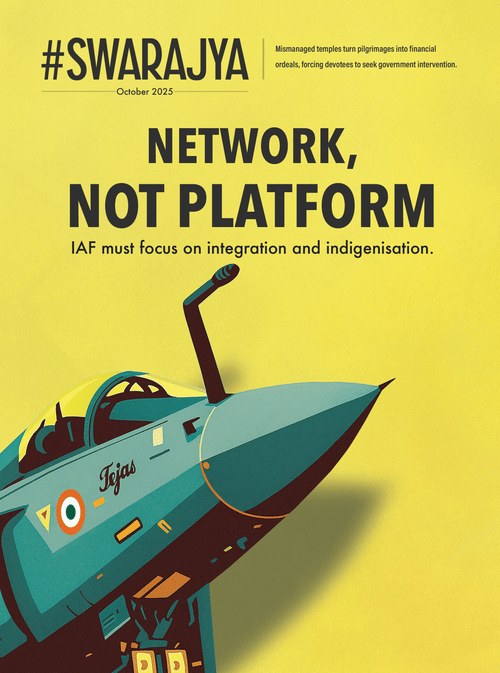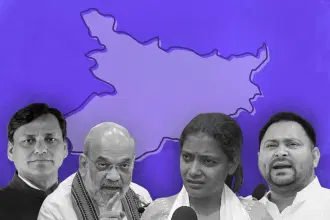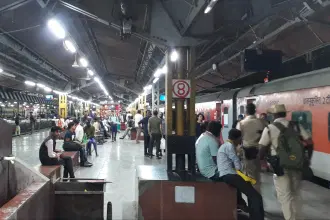Politics
Swipe Right On 'Pookie Rahul': How Congress is Selling The Gandhi Scion To Gen Z
Nabaarun Barooah
Aug 29, 2025, 12:05 PM | Updated 12:42 PM IST
Save & read from anywhere!
Bookmark stories for easy access on any device or the Swarajya app.
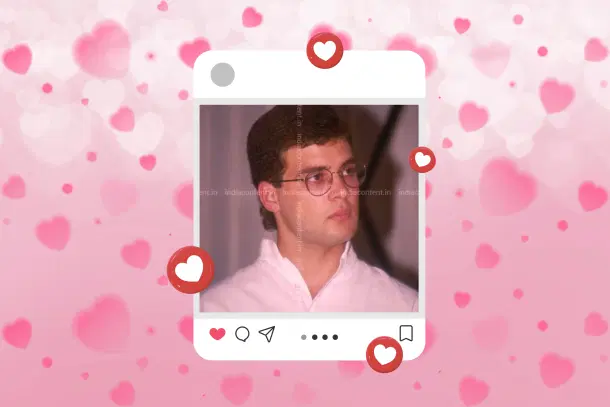

Scroll through Instagram reels today and one might stumble upon a curious trend: young girls and fashion influencers stitching together glow-up edits of Rahul Gandhi.
Using old photographs of his youthful days in St. Stephen's or in the US, applying soft aesthetic filters and layering them with romantic Bollywood tracks, they present the Congress leader not as a politician but as a style statement. Some call him "India's national crush," others hashtag him alongside K-drama stars.
For a generation that consumes politics more through visuals than through speeches, Rahul Gandhi's makeover has become a campaign in itself.
What we are witnessing is not an accident of fandom but the deliberate result of a PR strategy. In a landscape where manifestos are skimmed and speeches are reduced to soundbites, politics is now mediated through vibes and visuality.
The old formulas of roadshows, press conferences, and op-eds do not suffice in an ecosystem driven by Instagram reels, TikTok aesthetics, and YouTube shorts. The medium has transformed the message: if politics is spectacle, then the politician is the performer.
To be clear, the aestheticisation of politics is not new. Around the world, appearances have become shorthand for entire political identities. Justin Trudeau's playful socks and boyish charm sold him as the youthful progressive.
Volodymyr Zelenskyy's wartime hoodie created an instant icon of defiant resistance. John F. Kennedy and Barack Obama's telegenic charisma during televised debates helped cement the idea that television, and now social media, could make or break leaders.
India has seen its own share of aesthetic politics. The Nehru jacket became a visual symbol of Jawaharlal Nehru's modern statesman persona. Indira Gandhi's streak of white hair embodied authority. Rajiv Gandhi's youthful face helped him connect with an aspirational middle class.
What is different now is the velocity with which aesthetics circulate in the digital age. Social media multiplies, edits, and memes images into viral semiotics around a leader.
A single photograph of Rahul Gandhi in aviators can be spun into dozens of reels, each reaching millions. The meaning shifts from "this is Rahul Gandhi, a politician" to "this is Rahul Gandhi, an aesthetic."

This phenomenon has deeper implications. In a country where half the population is under 30, political communication is no longer about policy detail but about cultural resonance. Looks, moods, and vibes are increasingly central to how leaders are perceived.
The youth, especially first-time voters, are not attending rallies or reading manifestos. They are scrolling, swiping and laughing along with edits. If politics once spoke in the language of ideology, today it is aesthetics.
Rahul Gandhi's makeover, then, is not merely about changing clothes or styling his beard. It signals the Congress party's recognition that politics is as much about optics as about organisation.
The question, of course, is whether aesthetics can ever substitute for credibility or whether this makeover risks reducing politics itself to just another trending filter.
From Pappu to Marx to Poster Boy
Few Indian politicians have endured as dramatic a makeover as Rahul Gandhi. For much of his career, he carried the "Pappu" tag: the butt of jokes, the subject of endless memes and shorthand for political immaturity.
Clips of his gaffes, stumbles, and awkward speeches circulated endlessly online, reinforcing an image of a leader who was out of depth, a caricature rather than a contender. For an entire generation, Rahul Gandhi was less a serious politician and more a punchline.
That began to shift with the Bharat Jodo Yatra. The Congress party sought to turn weakness into strength by reframing Rahul as a mature leader willing to endure hardship.
The optics were carefully curated: a rugged, bearded man walking thousands of kilometres across the country, clad in plain T-shirts and joggers, projecting simplicity and resilience.
Photographs of a greying, contemplative Rahul went viral, and the visuals drew clear comparisons to Karl Marx, the philosopher-revolutionary, austere and weathered by struggle.
This was Rahul Gandhi 2.0: intellectual chic, sage-like, a man with gravitas.
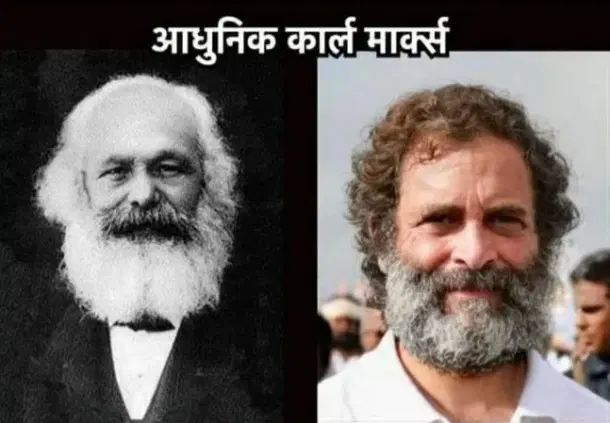
The imagery completely failed to connect with the mass electorate, especially young voters. The 2024 Lok Sabha elections were the litmus test, and the "philosopher-saint" frame proved electorally sterile.
Voters respected the long walk, but the Marxian aesthetic never quite landed with India's aspirational youth.
Additionally, the wise man look was Narendra Modi's core competency, and it is quite difficult to out-compete someone who has been in power for 25 years.
It is in the post-2024 phase that a decisive pivot occurred. The Congress realised that the sage-like aura was a dead end. Gravitas without glamour did not resonate with a generation that consumes politics through reels, edits and fashion trends.
Enter the new Rahul Gandhi: the "National Crush."
This makeover was not organic; it was carefully seeded. Fashion influencers began circulating Rahul's old photographs: the clean-shaven, youthful version, edited into glow-up montages.
Instagram reels now present him less as a statesman and more as a reel-worthy poster boy: cute, handsome, stylish, even "boyfriend material." Meme accounts that once mocked him now began to amplify this alternate narrative. Instagram fashion pages pushed out edits of Rahul in designer tees, with captions.
The target audience was clear: 18-21-year-olds, especially young women, whose primary engagement with politics on social media is aesthetic rather than ideological.
Instead of asking youth to admire Rahul for policy depth, the campaign invited them to feel for him as a guy-next-door who just happens to be a political leader.
What is unfolding here is emotional marketing designed to bypass the rational and strike at the parasocial.
The story is no longer of a man who walked thousands of kilometres in stoic silence, but of someone who can be adored, memed, and shared in bite-sized clips. It is an audacious shift: from Pappu to Marx to Pookie.
The Influencer Economy Behind the Makeover
The author reached out to many popular Instagram influencers posing as an agency page exploring similar edits for other celebrities.
What came out in that conversation peeled back the curtain on the new-age propaganda economy.
A female influencer with about 450,000 followers revealed that just weeks earlier, an agency had approached her with a very specific brief: make a reel around Rahul Gandhi.
She was offered ₹20,000 to post one video with the caption "The only propaganda I fall for:" paired with a sequence of young Rahul's pictures, set to the romantic Bollywood track "Aankhen teri kitni haseen." The reel went live, and within a week, it had crossed 100,000 views: not bad for a single piece of political aesthetic marketing disguised as lifestyle content.
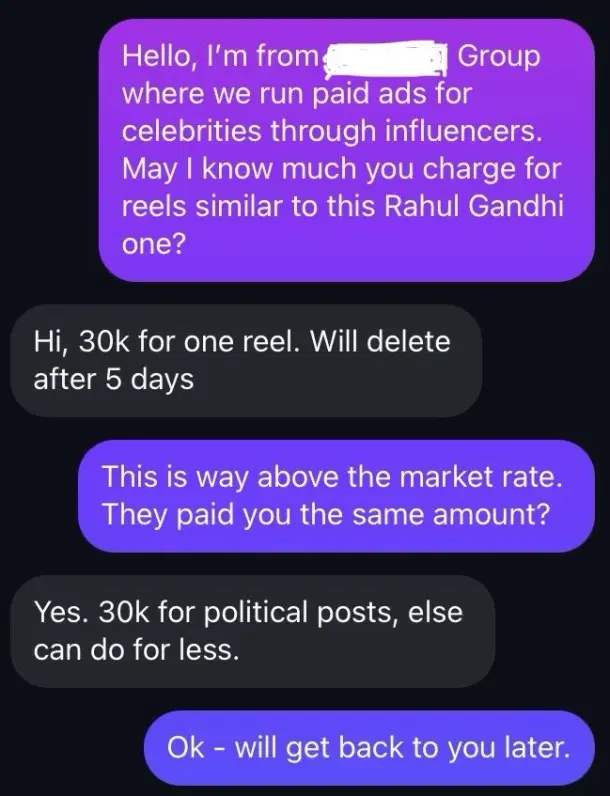
Another model, with over 600,000 followers, was even more forthright. She quoted ₹30,000 for one reel, which would stay pinned to her account for five days.
When asked if this was in line with what she charged for similar jobs, she casually mentioned that she had recently been paid the same amount for a reel that juxtaposed Rahul Gandhi's youthful images (one by the pyre of his grandmother Indira Gandhi, another evoking nostalgia and vulnerability) with the caption: "They made us hate him."
It was subtle, emotional, and perfectly crafted for Instagram's twenty-something demographic: politics stripped of manifestos, reduced to mood boards of grief, romance and retro aesthetics.
Others either declined to comment or brushed off the inquiry. But the picture was clear: Rahul Gandhi's makeover wasn't just organic "fan love." It was being seeded, styled and bankrolled in the influencer economy.
His PR, which failed with the Marx image, was hitting the spot right.
How Modi Can Reinvent Aesthetics for the Next Decade
If Rahul Gandhi is being remodelled for Instagram with cinematic glow-ups and boyish charm, Narendra Modi has already mastered an older playbook of image-making.
The half-sleeve kurta, the "chaiwala" rootedness, the strongman body language, the yoga-practising statesman, even the mountain wanderer.
But Modi's most striking visual reinvention came during the pandemic: the long beard and flowing hair. It was a departure from his usual neatly cropped look, and it immediately evoked India's rishi-raj archetype: the sage-king.
Many started calling him the "priest-king", a reference to the Harappan sculpture. That image carried a civilisational weight which Rahul's influencer-aesthetic cannot touch.
It made Modi look less like a party leader and more like a timeless figure, someone stepping out of India's deep memory rather than into a trend cycle.
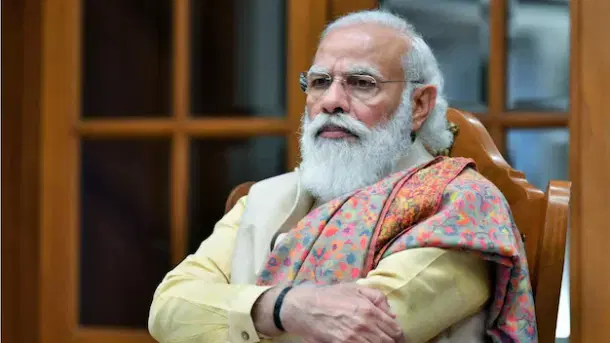
This is the aesthetic that Modi can lean into for the next decade. Not the youthful gloss of Instagram, but the timeless gravitas of India's spiritual and philosophical archetypes.
In a global political culture that thrives on temporary trends (Trudeau's socks, Zelenskyy's hoodie, JFK's television smile), Modi's beard signalled endurance. It suggested that India's leader was not chasing fashion but embodying continuity.
Even among young followers, that look represented both fatherly protection and love, something the trimmed beard look does not achieve.
The flowing long beard was an aesthetic of civilisational permanence, a visual argument that India's leadership belongs to the lineage of sages and warriors.
By holding on to that imagery, blending it with modern minimalism and his reputation for discipline, Modi can continue to look aspirational without looking trendy.
From Policy to Pop Culture
In today's India, elections are contested as much on Instagram grids as in public rallies. Rahul Gandhi's evolution from "Karl Marx beard" to "National Crush" underscores just how fluid and malleable political aesthetics have become.
The deeper question is, will politics in India be about policy, delivery, and governance, or will it be about the Instagram imagination of India's youth?
